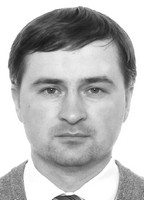Training process design in weightlifting sports customized to genetic predispositions
Фотографии:
ˑ:
Teoriya i praktika fizicheskoy kultury №6 2017, pp.75-77
PhD, Associate Professor M.O. Aksenov1
PhD A.B. Ilyin2
1Buryat State University, Ulan-Ude
2Russian State University of Physical Education, Sports, Youth and Tourism (GTSOLIFK), Moscow
Objective of the study was to provide theoretical grounds for the training and competitive loads being optimized within the frame of the long-term training process design in weightlifting sports in view of the athletes' individual genetic predispositions. We explored associations of the ACE, ACTN3 and PPARGC1A gene polymorphisms with the quantitative and qualitative parameters of the training process in weightlifting sports. Our analysis of the allele frequency for ACE, ACTN3 and PPARGC1A genes made it possible to expand our knowledge of the types of bodily adaptation to training loads. We found the genetic influences being significant for the sport mastery progress rates. We assumed the genetic factors being of effect on the individual competitive success forecasts within the frame of the long-term training process in weightlifting sports. We developed and implemented new methods designed to analyse and plan training loads versus relevant qualitative and quantitative progress parameters. New training and competitive load rating algorithms were offered for the weightlifting sports. We offered theoretical grounds for the training process design to facilitate the efforts to develop and implement new training methods to attain goals of the training and competitive process as required by the physical fitness and sport mastery improvement mission. We used the experimental data to develop the training and competitive load integrated rating method. The proposed training and competitive load rating algorithm makes it possible to clearly and simply rate the training process efficiency with the training loads being harmonized with the actual athletes’ working capacity levels in every physical training domain. The study found ACE, ACTN3 and PPARGC1A genotypes in weightlifting Masters of Sport and World Class Masters of Sport, and the finding makes it possible to customize athletes' training loads by variations of the qualitative and quantitative parameters of the training loads. The study findings were proved beneficial for the training process design in the weightlifting sports.
Keywords: genotype, extensity, intensity, training, weightlifting sports, macro-cycle, load, training process efficiency, training effectiveness.
References
- Aksenov M.O. Assotsiatsiya gena ACTN3 s pokazatelyami bioimpedansnogo analiza vysokokvalifitsirovannykh sportsmenov tyazheloatleticheskikh vidov sporta [ACTN3 gene association with indicators of bioelectrical impedance analysis of elite athletes in weightlifting sports]. Teoriya i praktika fiz. kultury, 2016, no. 2, p. 80.
- Aksenov M.O., Aksenova A.V. Postroenie trenirovochnogo protsessa sportsmenov tyazheloatleticheskikh vidov sporta na osnove dannykh bioimpedansnogo analiza [Weight lifter training process organization based on bioimpedance analysis data]. Teoriya i praktika fiz. kultury, 2015, no. 12, pp. 74–76.
- GMA. Geneticheski modifitsirovannye sportsmeny. nauchno-populyarny film [GMA. Genetically modified athletes. Popular science film]. Director Regine Abadia. France: Arte France Film Company and National Center for Cinematography of France, 2002. Available at: https://www.youtube.com/watch?v=bD0Z40oWkFQ (Accessed: 06.04.2017); Transl. from Fr. 2012.
- Earle V. Roger, Baechle Thomas R. Osnovy personalnoy trenirovki [Essentials of personal training]. Transl. from Engl. Kiev: Olimp. lit., 2012, 724 p.
- Patent RF № 2016610865, 21.01.2016. Aksenov M.O. Kompyuternaya programma «Sport 3.0». Rospatent # 2016610865, 2016 [Patent of the RF No. 2016610865, January 21, 2016. Aksenov M.O. Sport 3.0
- software. Rospatent No. 2016610865, 2016]. Platonov V.N. Periodizatsiya sportivnoy trenirovki. Obshchaya teoriya i ee prakticheskoe primenenie [Periodization of sports training. General theory and its practical application]. Kiev: Olimp. lit. publ., 2014, 624 p.: il.
- Roman R.A. Trenirovka tyazheloatleta. 2-e izd., pererab., dop. [Weightlifter Training. 2nd ed., Rev., Ext.] Moscow: Fizkultura i sport publ., 1986, 175 p.
- Solodkov A.S., Sologub E.B. Fiziologiya cheloveka. Obshchaya, sportivnaya, vozrastnaya [Human physiology. General, sports, age]. Moscow: Sovetskiy sport publ., 2012, 620 p.
- Gineviciene V., Jakaitiene A., Aksenov M.O., Aksenova A.V., Druzhevskaya A.M., Astratenkova I.V., Egorova E.S., Gabdrakhmanova L.J., Tubelis L., Kucinskas V., Utkus A. Association analysis of ACE, ACTN3 and PPARGC1А gene polymorphisms in two cohorts of European strength and power athletes. Biology of Sport, vol. 33, no. 3, pp. 199–206.
- Harre D. Principles of Sports Training. Berlin: Sportveriag publ., 1982, 231 р.
- Swen Körner, Peter Frei (Hg.) Die Möglichkeit des Sports Kontingenz im Brennpunkt sportwissenschaftlicher Analysen. DSHS-Koeln. 2012.



 Журнал "THEORY AND PRACTICE
Журнал "THEORY AND PRACTICE